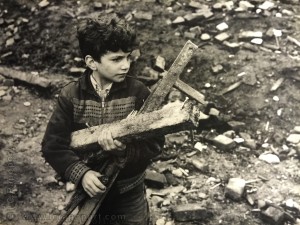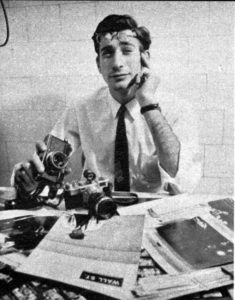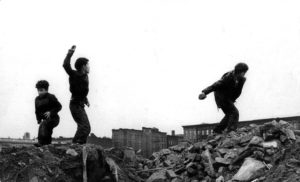THE EARLY YEARS – PART TWO
(1955-1957)
My career as a photojournalist was going nowhere and living at home, with my family, in The Bronx was beginning to wear upon me. Not only didn’t they have faith in my abilities to succeed as a magazine photographer they were able to monitor my daily failures and ask constant questions. Did I look for a job? Did I want to go back to school? Yes, I answered, but at the Ecole Technique de Photographie et Cinematographie in Paris. I had the brochures. “It would only cost….”

But, having already flunked out of Ohio, and having thrown their hard earned money down the drain with nothing to show for it but my never-ending desire to work for LIFE or Paris-Match magazines, which they still considered a far-fetched fantasy, a goal way beyond my reach. I could understand their attitude however I was determined to move forward towards my dream. Somewhere I had heard or read that dreams were plans made at night, thought through at dawn, and acted upon in the light of day. Nothing would stop me.
Only my neighbor Simon Nathan continued to have faith in my abilities.
He encouraged me to move forward, to make things happen. So I made frequent trips to LIFE magazine’s Contributions Editor, Ruth Lester, the mother hen of young free-lancers, who offered encouragement, reviewed our work, and told us how good we were. She advised us to “Go out, cover stories anyway that you can. Get pictures that our photographers can’t get, or don’t see, and bring the film to me, we’ll have them developed. At the very least, you’ll get free proof sheets and maybe even some enlargements. But most important, your work will be seen by some of the editors.”
So off we went. Every news story of any import brought three or four of the young ‘turks’ to the rails of the police barricades where we were stopped for lack of press credentials, namely, the all important laminated New York City Press ‘shield’ which was coveted by us all. Sneaking under the “lines” or slipping into forbidden doors was the norm.
But, getting through the police lines didn’t guarantee getting better photographs than the photographers employed by the magazines.

My job working for the personal injury attorney took an ironic turn that had a profound impact on my career as a photojournalist. My daily assignments had me traveling all five boroughs of the city documenting the various venues where people had been injured when in he course of my work I suffered a near fatal accident.
The City, being as huge as it is, I could only shoot five or six of the dozen or more locations on my case list. The smart lawyer, realizing that my time on subways and buses kept me from moving about in a timely fashion, invested in a new novelty: a Vespa motor scooter, a small two-wheeled vehicle aptly named, The Wasp. And it stung.
With this buzzy little bike, the lawyer explained to me, I’d be able to shoot eight to ten locations in a day and immediately switched me from an hourly pay to a “per-location” fee. If he was correct, I stood to double my income depending on how fast I was willing to push that little Wasp. On the very first day, having picked up the new bike at a dealership in the Riverdale section of the Bronx and after having a brief introduction to its operation, I set off to make my fortune. Somewhere on the Major Deegan Expressway, a car cut in too close to me causing me to lose control of the machine. I wobbled, corrected, overcorrected and then, in the parlance of bikers: went down hard to the pavement. I bounced and scraped along the expressway trying to keep my unprotected head from acting as a bumper and praying that vehicles behind me would be able to avoid running me over.

Dazed, sitting on the side of the expressway with a broken nose and bloody face, hands and knees, a good samaritan stopped and drove me to the hospital.
I was fired the following day and while recuperating from my injuries I applied for Workmen’s Compensation and ultimately was awarded $850 dollars, a whopping sum of money in 1958.
My mother wanted me to have my nose “fixed,” but instead, I took the money and went off to join my high school pal, Mickey Amberger, who was working as an art director for an advertising agency in San Juan, Puerto Rico. He had already called several times and encouraged me to come down to the land of sunshine and winter baseball. And so, in late December of 1958, I took the $850 bucks and flew Caribe Air to San Juan.


Leave a Reply